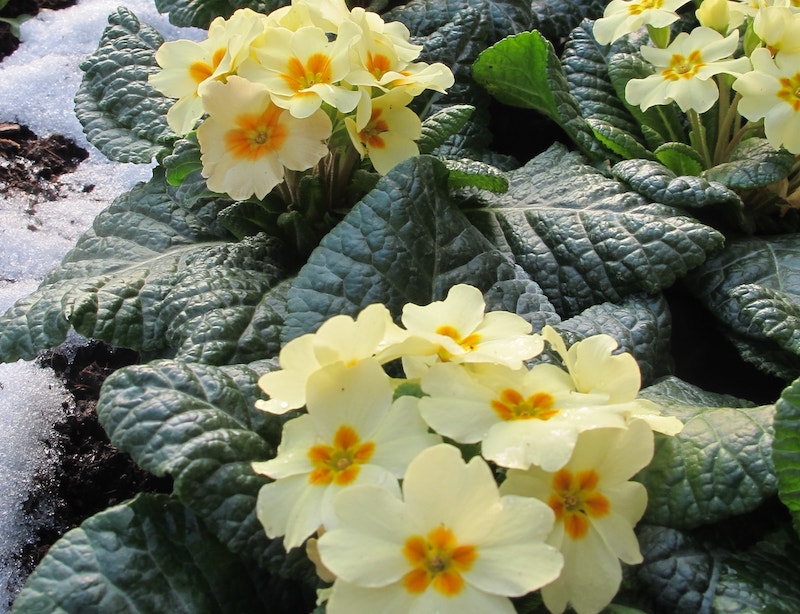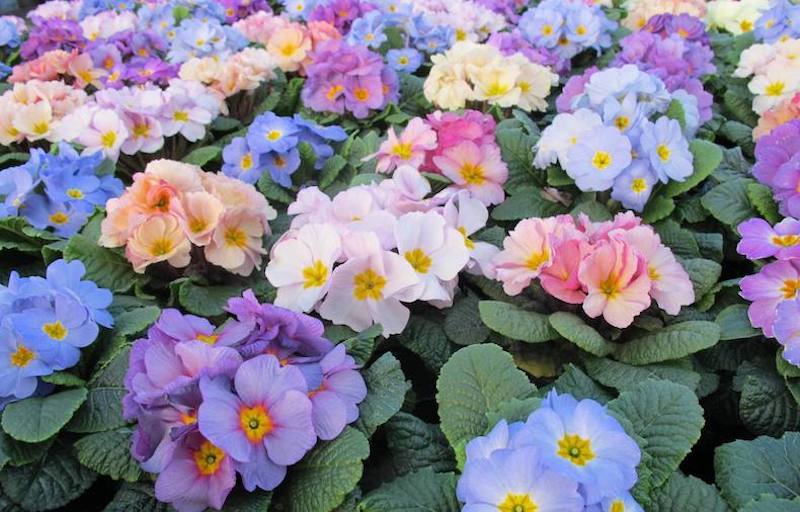Did you know that the 19th of April is Primrose Day? Once nationally recognised as a day for mourning a popular political figure and celebrating the arrival of spring, the date has since faded from public consciousness. Here we remember this long-lost spring tradition and take a little time to celebrate primulas, one of our favourite spring flowers.
The history of Primrose Day
The 19th April 1881 was the day on which Queen Victoria’s favourite prime minister, Benjamin Disraeli, died. Queen Victoria sent a wreath of yellow primroses with a note referring to them being “his favourite flowers”. Naturally it was assumed that she was referring to the primrose being Disraeli’s favourite flower but it was later believed that she had in fact been referring to her beloved Prince Albert.
Nonetheless, Primrose Day was formed to celebrate spring and to mark the life of one of Britain’s great Victorian leaders. For many years, on 19th April, people would place wreaths of primroses on Disraeli’s monument on Tinker’s Hill in the Hughenden Valley near High Wycombe in Buckinghamshire.
About the primrose

Wild primroses are often found growing naturally in shady woodlands
Image: Marinodenisenko/Shutterstock
The name primrose comes from the Latin prima rosa, meaning ‘first rose’. It belongs to the primula family of which there are roughly 1,000 varieties. The one we see adorning banks, verges, hedgerows, and woodland across the country every spring is the common primrose, an insignificant name for a lovely little plant with soft yellow flowers rising on hairy stems from tough leathery leaves.
Primroses bloom as early as December in southern and south western counties and can continue to flower until late May. As an early flower, they’re an important source of nectar for spring butterflies and, because they mark the transition from winter to spring, also have significance in folklore.
In Irish tradition, primroses are both symbols of eternal love and, when festooning a doorway, are supposed to prevent faeries from entering. Meanwhile, in English folklore, the flower was often used as a burial garland for young women who died during the spring, its pale colours denoting purity.
Today, primroses give a clue as to the age of woodlands. In fact, according to the Woodland Trust, if you spot clusters of them during a walk in your local woods, it’s a reliable sign that you’re tramping in ancient woodland, a rare and special privilege.
The county flower of Devon

‘Husky Raspberry Punch’ has a variety of pink flowers with a bright yellow centres
Image: Primula ‘Husky Raspberry Punch’ from Suttons
Not only does the common primrose have its own day, it also has its own county! In 2002, British conservation charity Plantlife led a nationwide campaign to identify and designate a native wildflower to each county. The people of Devon voted for and elected the primrose and so it’s of special significance to all of us here at Suttons. Being based in Paignton, Devon, we’re lucky enough to have the lovely primrose as our county flower.
Ready to try growing primroses

Primula ‘Everlast’ returns year after year to herald the arrival of spring
Image: Suttons
If you don’t already have primroses growing in your garden, perhaps it’s time for a rethink. Preferring cool semi-shaded areas, these plants are ideal for wooded edges, banks, and for growing under hedges and in borders or containers. Plant your primroses in moist but well-drained soil and they’ll continue to delight year after year, and will readily self-seed and naturalise.
Fancy a different take on this most traditional of cottage garden plants? There’s a wealth of hues and styles from which to choose, all of which help to bring that wonderful splash of colour to your springtime garden that tells us that summer is finally on its way.
“And all England, so they say,
Yearly blooms on Primrose Day.”
Henry Cuyler Bunner – poet
Lead image: Primula ‘Provence Mix’ from Suttons
Last Updated on December 3, 2025 by Suttons Horticultural Team





